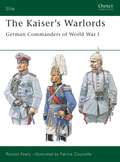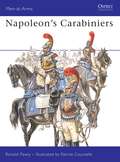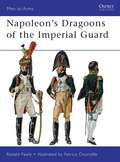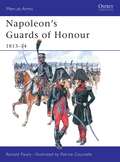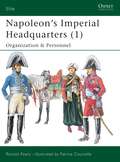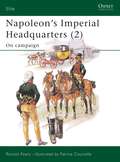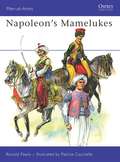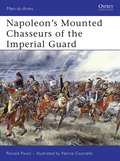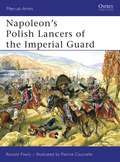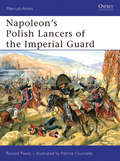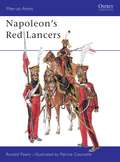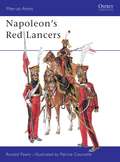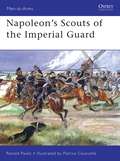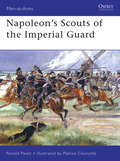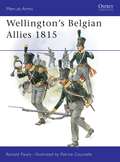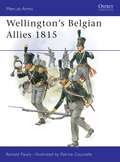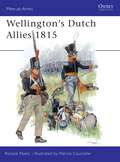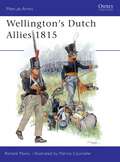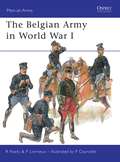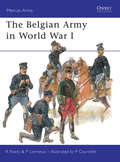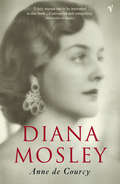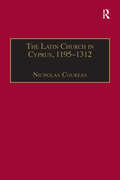- Table View
- List View
What Is Mathematics?: An Elementary Approach to Ideas and Methods
by the late Richard Courant Herbert RobbinsFor more than two thousand years a familiarity with mathematics has been regarded as an indispensable part of the intellectual equipment of every cultured person. Today, unfortunately, the traditional place of mathematics in education is in grave danger. The teaching and learning of mathematics has degenerated into the realm of rote memorization, the outcome of which leads to satisfactory formal ability but does not lead to real understanding or to greater intellectual independence. This new edition of Richard Courant's and Herbert Robbins's classic work seeks to address this problem. Its goal is to put the meaning back into mathematics. Written for beginners and scholars, for students and teachers, for philosophers and engineers, What is Mathematics?, Second Edition is a sparkling collection of mathematical gems that offers an entertaining and accessible portrait of the mathematical world. Covering everything from natural numbers and the number system to geometrical constructions and projective geometry, from topology and calculus to matters of principle and the Continuum Hypothesis, this fascinating survey allows readers to delve into mathematics as an organic whole rather than an empty drill in problem solving. With chapters largely independent of one another and sections that lead upward from basic to more advanced discussions, readers can easily pick and choose areas of particular interest without impairing their understanding of subsequent parts. Brought up to date with a new chapter by Ian Stewart, What is Mathematics?, Second Edition offers new insights into recent mathematical developments and describes proofs of the Four-Color Theorem and Fermat's Last Theorem, problems that were still open when Courant and Robbins wrote this masterpiece, but ones that have since been solved. Formal mathematics is like spelling and grammar--a matter of the correct application of local rules. Meaningful mathematics is like journalism--it tells an interesting story. But unlike some journalism, the story has to be true. The best mathematics is like literature--it brings a story to life before your eyes and involves you in it, intellectually and emotionally. What is Mathematics is like a fine piece of literature--it opens a window onto the world of mathematics for anyone interested to view.
The Kaiser's Warlords: German Commanders of World War I (Elite #97)
by Patrice Courcelle Ronald PawlyThe turn of the 20th century saw Imperial Germany as essentially a militarist state, whose growing industrial resources and wealth were harnessed to the task of increasing German military power, at a time of aggressive expansionist diplomacy in competition with Britain and France. After her victories over Austria in the 1860s and France in 1870, Germany's General Staff enjoyed tremendous professional prestige throughout Europe, and was the model for all aspects of command and control. The German army was essentially that of Prussia, Bavaria and Saxony with smaller contingents from the lesser states. Its generals were the men who planned, initiated, and to a large extent controlled the course of World War I.
Napoleon’s Carabiniers (Men-at-Arms)
by Patrice Courcelle Ronald PawlyThe two privileged regiments of Carabiniers survived the French Revolution with their elite status intact. They covered themselves with glory at Austerlitz, Friedland, Ratisbonne and Wagram where their bloody losses shocked Napoleon into ordering them new helmets and cuirasses. Re-formed after near annihilation in Russia in 1812, they fought at Leipzig and in many actions of the 1814 French campaign, and made one of the final charges at Waterloo. lllustrated with rare early prints and meticulous colour reconstructions, this book details their story, and their unique uniforms, from surviving period documents.
Napoleon’s Carabiniers (Men-at-Arms #405)
by Patrice Courcelle Ronald PawlyThe two privileged regiments of Carabiniers survived the French Revolution with their elite status intact. They covered themselves with glory at Austerlitz, Friedland, Ratisbonne and Wagram where their bloody losses shocked Napoleon into ordering them new helmets and cuirasses. Re-formed after near annihilation in Russia in 1812, they fought at Leipzig and in many actions of the 1814 French campaign, and made one of the final charges at Waterloo. lllustrated with rare early prints and meticulous colour reconstructions, this book details their story, and their unique uniforms, from surviving period documents.
Napoleon’s Dragoons of the Imperial Guard (Men-at-Arms)
by Patrice Courcelle Ronald PawlyDressed in distinctive green uniforms and classically inspired copper helmets, the Dragoons of the Imperial Guard were raised in 1806 by the same criteria as other Guard units – by selection of picked, literate veterans from Line regiments who had six to ten years of service, and citations for bravery in at least two campaigns. The following year they were named Dragons de l'Impératrice in a unique compliment to the Empress Josephine. As a ceremonial regiment it enjoyed many privileges, but it also saw combat on a number of occasions, including the battles of Essling and Wagram (1809), the Russian campaign (1812, when it suffered severe losses), at Bautzen, Wachau and Leipzig (1813), in the 1814 Campaign of France, and at Ligny and Waterloo (1815).
Napoleon's Guards of Honour: 1813–14 (Men-at-Arms)
by Patrice Courcelle Ronald PawlyOne of the least understood of Napoleon's corps were the four regiments of Gardes d'honneur, raised in 1813 during the frantic rebuilding of the French cavalry after the huge losses in Russia. Recruited from the leading social classes, uniformed and equipped at their own expense, and accompanied by servants to take care of such unpleasant chores as stable duty, these men were promised commissions as officers after a year's service in the ranks. Though spectacularly unready for combat upon their arrival with the army, the Guards of Honour would gain skill and confidence while serving alongside the élite cavalry of the Imperial Guard in the campaigns of Saxony and France, 1813-14, and distinguished themselves in battle at Hanau and Rheims. The story of their organisation, uniforms and service is researched from rare archives and memoirs, and illustrated with portraits, surviving uniform items, and meticulous colour plates.
Napoleon's Guards of Honour: 1813–14 (Men-at-Arms #378)
by Patrice Courcelle Ronald PawlyOne of the least understood of Napoleon's corps were the four regiments of Gardes d'honneur, raised in 1813 during the frantic rebuilding of the French cavalry after the huge losses in Russia. Recruited from the leading social classes, uniformed and equipped at their own expense, and accompanied by servants to take care of such unpleasant chores as stable duty, these men were promised commissions as officers after a year's service in the ranks. Though spectacularly unready for combat upon their arrival with the army, the Guards of Honour would gain skill and confidence while serving alongside the élite cavalry of the Imperial Guard in the campaigns of Saxony and France, 1813-14, and distinguished themselves in battle at Hanau and Rheims. The story of their organisation, uniforms and service is researched from rare archives and memoirs, and illustrated with portraits, surviving uniform items, and meticulous colour plates.
Napoleon’s Imperial Headquarters: Organization and Personnel (Elite #115)
by Patrice Courcelle Ronald PawlyThe 'military machine' by which Napoleon and his indispensable chief of staff Marshal Berthier commanded and controlled his huge armies on campaign numbered some 1,500 officers and men, organized in the different bureaux of his military and civilian 'households' and the army general headquarters. This essential tool of the Emperor's power was designed to provide him, even in a front-line camp, with all the information, technical support and comfort that he enjoyed in his palaces. This fascinating study details the entourage which enabled Napoleon to move hundreds of thousands of troops right across Europe.
Napoleon’s Imperial Headquarters: On campaign (Elite #116)
by Patrice Courcelle Ronald PawlyFollowing Elite 115 – which described the composition of Napoleon's military and civil 'households', and Marshal Berthier's army general headquarters – this title offers an intimate glimpse of the Emperor's entourage in the field. Centred on the Waterloo campaign in 1815, it draws comparisons with his earlier triumphs. From the testimony of his trusted servants, the text draws a vivid picture of his daily routines on the march. Of particular interest are new details of Napoleon's tented camp HQ from 1812; and a further selection of the striking uniforms worn by his closest attendants.
Napoleon’s Mamelukes (Men-at-Arms)
by Patrice Courcelle Ronald PawlyThe most exotic of all the troops of Napoleon's Imperial Guard were undoubtedly the Mamelukes – the bodyguard of Oriental cavalry which followed him home after the Egyptian expedition of 1798–1801, and remained with his Mounted Chasseurs regiment throughout the First Empire. For the first time in English, this book tells the Mamelukes' story, from Austerlitz to Waterloo. Quoting from the original nominal rolls and battle casualty returns, the author brings individual members of this extraordinary unit to life. His text is illustrated with rare early engravings and paintings, and the full-colour plates show the development of the unit's romantic Turkish uniforms.
Napoleon’s Mounted Chasseurs of the Imperial Guard (Men-at-Arms)
by Patrice Courcelle Ronald PawlyA concise history of the hand-picked elite cavalry guard that served as Napoleon's close personal escort and were committed to the most dangerous areas of combat on the battlefield. Formed from his original escort of 'Guides' and the 'Consular Guard' in 1799, the Mounted Chasseurs were a personal favourite of the Emperor, who wore their uniform on campaign. Ronald Pawly's unique research into regimental archives has uncovered unprecedented detail about this exceptional unit and its soldiers and officers. With their colourful uniforms recreated in full-colour artwork and accounts of their actions in the most critical Napoleonic battles, this book provides a comprehensive description of these legendary elite soldiers.
Napoleon’s Polish Lancers of the Imperial Guard (Men-at-Arms)
by Patrice Courcelle Ronald PawlyThis book draws on original regimental records to give by far the most detailed account ever published in English of the organization and personalities of the most renowned of the foreign units that served in the Emperor's armies. Unlike most of his foreign troops, these Polish horsemen were true volunteers, who owed their honoured place in his Imperial Guard to their proven courage and dash on battlefields from Spain to Russia. The text is illustrated with rare portraits and photographs, and with detailed colour plates of the Lancers' magnificent uniforms.
Napoleon’s Polish Lancers of the Imperial Guard (Men-at-Arms #440)
by Patrice Courcelle Ronald PawlyThis book draws on original regimental records to give by far the most detailed account ever published in English of the organization and personalities of the most renowned of the foreign units that served in the Emperor's armies. Unlike most of his foreign troops, these Polish horsemen were true volunteers, who owed their honoured place in his Imperial Guard to their proven courage and dash on battlefields from Spain to Russia. The text is illustrated with rare portraits and photographs, and with detailed colour plates of the Lancers' magnificent uniforms.
Napoleon's Red Lancers (Men-at-Arms)
by Patrice Courcelle Ronald PawlyThe legendary Dutch 'Red' Lancers – the 2nd Light Horse Lancers of Napoleon's Imperial Guard – were formed in 1810 after the emperor annexed Holland and its army to France. The former hussars of the Dutch Royal Guard got a handsome new uniform, a new weapon, and a hard-driving new colonel in Baron Edouard Colbert. His lancers distinguished themselves in Russia in 1812, at huge cost; in Germany in 1813, and in the Low Countries in 1814. When Napoleon returned from exile in 1815 the Red Lancers were with him until night fell over Waterloo. Ronald Pawly is the world's leading expert on the archival and pictorial record left by this regiment; his detailed text is illustrated with rare portraits and photographs, and eight glowing colour plates of a surprisingly wide variety of uniforms.
Napoleon's Red Lancers (Men-at-Arms #389)
by Patrice Courcelle Ronald PawlyThe legendary Dutch 'Red' Lancers – the 2nd Light Horse Lancers of Napoleon's Imperial Guard – were formed in 1810 after the emperor annexed Holland and its army to France. The former hussars of the Dutch Royal Guard got a handsome new uniform, a new weapon, and a hard-driving new colonel in Baron Edouard Colbert. His lancers distinguished themselves in Russia in 1812, at huge cost; in Germany in 1813, and in the Low Countries in 1814. When Napoleon returned from exile in 1815 the Red Lancers were with him until night fell over Waterloo. Ronald Pawly is the world's leading expert on the archival and pictorial record left by this regiment; his detailed text is illustrated with rare portraits and photographs, and eight glowing colour plates of a surprisingly wide variety of uniforms.
Napoleon’s Scouts of the Imperial Guard (Men-at-Arms)
by Patrice Courcelle Ronald PawlyDriven out of Germany after his defeat at Leipzig in 1813, Napoleon seemed to face disaster. Some 345,000 Allied troops were converging on France from the east; and Napoleon had only about 80,000 men. Most of his veterans had been killed in Russia and Germany, and he was short of cavalry to counter the swarms of Cossacks. For his last and possibly most brilliant campaign, Napoleon raised three regiments of mounted Scouts for his Imperial Guard. Through the story of these units the reader can follow Napoleon's dazzling manoeuvres in the campaign of 1814; and their widely varied uniforms are reconstructed in meticulously researched colour plates.
Napoleon’s Scouts of the Imperial Guard (Men-at-Arms #433)
by Patrice Courcelle Ronald PawlyDriven out of Germany after his defeat at Leipzig in 1813, Napoleon seemed to face disaster. Some 345,000 Allied troops were converging on France from the east; and Napoleon had only about 80,000 men. Most of his veterans had been killed in Russia and Germany, and he was short of cavalry to counter the swarms of Cossacks. For his last and possibly most brilliant campaign, Napoleon raised three regiments of mounted Scouts for his Imperial Guard. Through the story of these units the reader can follow Napoleon's dazzling manoeuvres in the campaign of 1814; and their widely varied uniforms are reconstructed in meticulously researched colour plates.
Wellington's Belgian Allies 1815 (Men-at-Arms)
by Patrice Courcelle Ronald PawlyThe army commanded by the Duke of Wellington at Quatre-Bras and Waterloo included two infantry divisions and three cavalry brigades of the newly-unified Netherlands (or 'Dutch-Belgian') army. The part played by these troops in the two battles, under experienced officers many of whom had seen long service in Napoleon's campaigns, has often been unjustly dismissed by British commentators. The organisation, uniforms, and battle record of the Belgian units are explained here in detail by an experienced researcher in Continental archives, and illustrated by a specialist in the period, who actually lives at Waterloo.
Wellington's Belgian Allies 1815 (Men-at-Arms #355)
by Patrice Courcelle Ronald PawlyThe army commanded by the Duke of Wellington at Quatre-Bras and Waterloo included two infantry divisions and three cavalry brigades of the newly-unified Netherlands (or 'Dutch-Belgian') army. The part played by these troops in the two battles, under experienced officers many of whom had seen long service in Napoleon's campaigns, has often been unjustly dismissed by British commentators. The organisation, uniforms, and battle record of the Belgian units are explained here in detail by an experienced researcher in Continental archives, and illustrated by a specialist in the period, who actually lives at Waterloo.
Wellington's Dutch Allies 1815 (Men-at-Arms)
by Patrice Courcelle Ronald PawlyThe forces commanded by the Duke of Wellington at Quatre-Bras and Waterloo included two infantry divisions and three cavalry brigades of the newly unified ('Dutch-Belgian') army of the Kingdom of the Netherlands, mostly led by veteran officers who had served under Napoleon. The part played by these troops particularly in holding the vital crossroads of Quatre-Bras, at the insistence of their own commanders has often been unjustly dismissed by British commentators. In this book the history, organisation, uniforms and battle record of the Dutch units of this army are explained and illustrated in detail by two experienced researchers in Continental archives, and illustrated with many rare portraits as well as meticulous colour plates.
Wellington's Dutch Allies 1815 (Men-at-Arms #371)
by Patrice Courcelle Ronald PawlyThe forces commanded by the Duke of Wellington at Quatre-Bras and Waterloo included two infantry divisions and three cavalry brigades of the newly unified ('Dutch-Belgian') army of the Kingdom of the Netherlands, mostly led by veteran officers who had served under Napoleon. The part played by these troops particularly in holding the vital crossroads of Quatre-Bras, at the insistence of their own commanders has often been unjustly dismissed by British commentators. In this book the history, organisation, uniforms and battle record of the Dutch units of this army are explained and illustrated in detail by two experienced researchers in Continental archives, and illustrated with many rare portraits as well as meticulous colour plates.
The Belgian Army in World War I (Men-at-Arms)
by Patrice Courcelle Ronald Pawly Pierre LierneuxWhile small in numbers, the Belgian Army played a vital role in World War 1 that is often overlooked. Germany's invasion of neutral Belgium, which led Britain to declare war in August 1914, should have been swift and fierce yet the unexpected heroic defence, against great odds, of Belgian fortresses, frustrated the German Schlieffen Plan for a thrust to Paris and a lightning victory. The plucky Belgian resistance proved successful in buying time for French and British troops to mobilize and report to the front, where the Belgians would then go on to fight, stubbornly defending the northern end of the Allied trench line for the rest of the war. Discover the story of this determined Army, from their organization and commanders, to their uniforms and equipment. The only main combatant army of World War I not previously covered by Osprey, this volume will be an important addition to any enthusiast's collection, accompanied by detailed artwork and archive photographs.
The Belgian Army in World War I (Men-at-Arms #452)
by Patrice Courcelle Ronald Pawly Pierre LierneuxWhile small in numbers, the Belgian Army played a vital role in World War 1 that is often overlooked. Germany's invasion of neutral Belgium, which led Britain to declare war in August 1914, should have been swift and fierce yet the unexpected heroic defence, against great odds, of Belgian fortresses, frustrated the German Schlieffen Plan for a thrust to Paris and a lightning victory. The plucky Belgian resistance proved successful in buying time for French and British troops to mobilize and report to the front, where the Belgians would then go on to fight, stubbornly defending the northern end of the Allied trench line for the rest of the war. Discover the story of this determined Army, from their organization and commanders, to their uniforms and equipment. The only main combatant army of World War I not previously covered by Osprey, this volume will be an important addition to any enthusiast's collection, accompanied by detailed artwork and archive photographs.
Diana Mosley: Mitford Beauty, British Fascist, Hitler's Angel
by Anne De CourcyDiana Mosley was one of the most fascinating and controversial figures of recent times. For some, she was a cult; for many, anathema. Born in 1910 Diana was the most beautiful and the cleverest of the six Mitford sisters. She was eighteen when she married Bryan Guinness, of the brewing dynasty, by whom she had two sons. After four years, she left him for the fascist leader, Oswald Mosley, and set herself up as Mosley's mistress - a course of action that horrified her family and scandalised society. In 1933 she took her sister Unity to Germany; soon both had met the new German leader, Adolf Hitler. Diana became so close to him that when she and Mosley married in 1936 the ceremony took place in the Goebbels drawing room and Hitler was guest of honour. She continued to visit Hitler until a month before the outbreak of war; and afterwards, for many, years, refused to believe in the reality of the Holocaust. This gripping book is a portrait of both an extraordinary individual and the strange, terrible world of political extremism in the 1930s.
The Latin Church in Cyprus, 1195–1312
by Nicholas CoureasThis is a study of the first century of the Latin Church on Cyprus, following the island’s loss to the Byzantine empire and its conquest by Richard the Lionheart in 1195. It covers both secular and regular clergy, and deals with the complex relations between church and crown, the nobility, and the urban Latin population within the island, as well as its relations with the papacy and the other Latin churches of the East. Not least, it analyses the troubled relations between the Latin and the Orthodox churches. An important feature of the book is the new light thrown on the links between the Church of Cyprus and the Latin patriarchs of Jerusalem and Antioch, and on the expansion of the Latin Church in the East, in the Byzantine territories conquered following the Fourth Crusade. This book is the first in-depth account of the religious history of the Latin kingdom of Cyprus which was the most durable of all the latin states established by the Crusaders in the Eastern Mediterranean.

